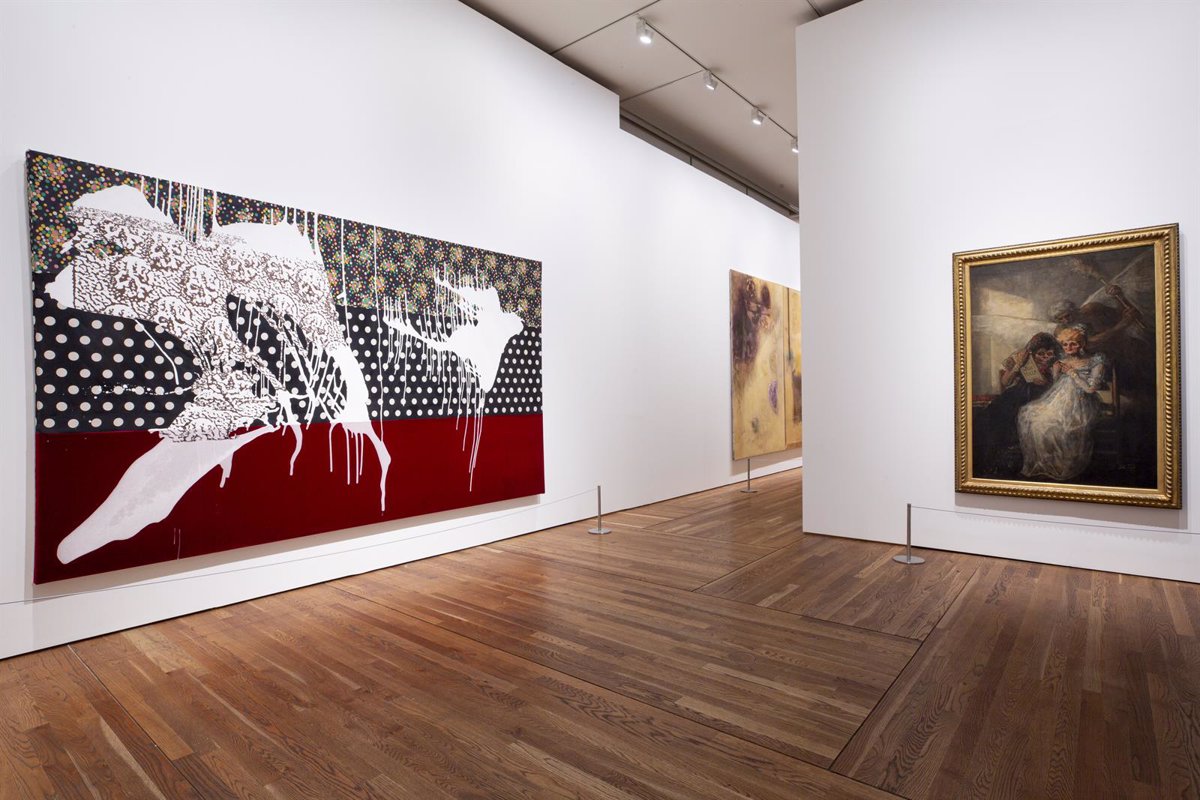He Prado Museum and the Prado Museum Friends Foundationin collaboration with the Madrid City Council, presented this Monday the first individual exhibition of Sigmar Polke in Madrid, which offers a tour of the different styles of the German contemporary artist characterized by density, memory and layers, influenced by all of them. , by Francisco de Goya, as reflected in the painting ‘The old ones o The Time’ by the Aragonese author.
Curated by Gloria Moure, ‘Sigmar Polke Affinities Revealed’which can be visited from this Tuesday until March 16, 2025, shows how art constructs art through forty pieces that reflect the imprint of the two artists, separated by two centuries of difference, but connected by their approach “disruptive and visionary“.
“The artist is a participating entity, (the concept of) the fall of an established world and the beginning of another world, unites him a lot with Goya because Goya was also a character in a world in which established concepts fell, There is an affinity between two situations of two great artists in different times“said the artist’s daughter, Ana Polke during the presentation of the exhibition at the Prado. Polke lived in both East and West Germany, and witnessed how society changed after the fall of the Berlin Wall.
This exhibition brings together paintings, photographs and drawings by Polke, together with the painting ‘The Old Women or Time’ (1810-12) by Goya belonging to the Lille Museum, which is presented for the first time in Spain together with its x-ray, an image that reveals compositions that Polke was especially attracted to works that are located right at the beginning of the tour.
As curator Moure detailed during the presentation, this discovery encouraged her to experiment with new artistic searches and was a source of inspiration to delve deeper into her own interests. It is an.
In the upper left part of the x-ray of Goya’s painting, a resurrection of Christ is identified, which is not clearly visible in the original painting, only a slight figure, and other elements that cannot be seen such as a landscape on the right side. from below or another woman different from the two that monopolize the painting.
This discovery would mark Polke’s work, which is characterized by capturing ghostly figures, skulls, different layers and densities, the shadow of Saturn – both in its mythological and planetary aspects – or using Goya’s signature as an artistic element.
The exhibition does not develop chronologically, but through concepts that transcend time by interweaving different techniques, all against the background of a cultural and political change at the end of the 20th century that Polke experienced.
